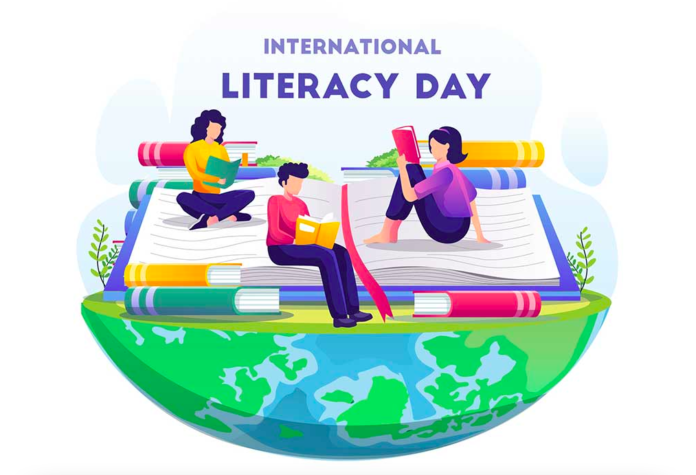International Literacy Day, observed on September 8th each year, is a global celebration aimed at highlighting the importance of literacy and raising awareness about the challenges and opportunities it presents worldwide. This article explores the origins, significance, current global literacy landscape, and the celebration’s role in promoting literacy.
1. Origins of International Literacy Day
The roots of International Literacy Day can be traced back to the World Conference of Ministers of Education on the Eradication of Illiteracy, held in Tehran, Iran, in 1965. During this conference, the idea of a dedicated day to address illiteracy was first proposed. In 1966, UNESCO officially declared September 8th as International Literacy Day, and since then, it has been celebrated annually.
2. The Significance of Literacy
Literacy, often defined as the ability to read, write, and comprehend information, is a fundamental skill with far-reaching implications:
- Empowerment: Literacy empowers individuals by providing them with the tools to access information, express themselves, and make informed decisions. It is a cornerstone of personal freedom.
- Economic Advancement: Literacy is closely linked to economic well-being. It enhances employability, income potential, and economic growth, thus reducing poverty.
- Healthcare: Literacy enables individuals to understand healthcare information, leading to better health outcomes. It empowers people to access healthcare services and make informed decisions about their well-being.
- Social Inclusion: Illiteracy often leads to social exclusion. Literacy is crucial for individuals to participate fully in their communities, societies, and democratic processes.
- Cultural Preservation: Literacy helps preserve cultural heritage and traditions by allowing people to document and transmit their knowledge to future generations.
- Sustainable Development: Literacy is a key component of the United Nations Sustainable Development Goals (SDGs). It is intertwined with multiple goals, including quality education, gender equality, and reduced inequalities.
3. The Global Literacy Landscape
Despite substantial progress in literacy rates worldwide, challenges persist:
- Gender Disparities: Gender disparities in literacy rates persist in many regions. Women and girls often face greater obstacles to acquiring literacy skills.
- Digital Divide: In an increasingly digital world, the digital divide exacerbates literacy challenges. Access to digital resources and digital literacy skills are crucial for participation in modern society.
- Low Literacy Levels: A significant portion of the global population still struggles with low literacy levels, hindering their access to educational and economic opportunities.
- Lifelong Learning: The concept of literacy has evolved to encompass digital literacy, financial literacy, and media literacy. Encouraging lifelong learning is vital to keeping pace with the demands of the modern world.
- Conflict and Displacement: Conflict-affected regions and displaced populations often face disrupted education systems, further compounding literacy challenges.
4. International Literacy Day in Action
International Literacy Day serves as a platform for various stakeholders, including governments, NGOs, educational institutions, and individuals, to come together and address these challenges. Activities on this day are aimed at:
- Raising Awareness: Through seminars, workshops, and public awareness campaigns, the importance of literacy is highlighted. The focus extends beyond traditional literacy to encompass digital and information literacy.
- Advocacy: Advocacy efforts call for increased investment in education, policies to address literacy disparities, and strategies to promote lifelong learning.
- Showcasing Success Stories: International Literacy Day provides an opportunity to celebrate success stories of individuals and communities that have overcome literacy challenges.
- Resource Mobilization: Fundraising and resource mobilization activities seek to support literacy programs, especially in underserved regions.
- Policy Dialogues: High-level policy dialogues and conferences are convened to discuss literacy-related issues and chart a path forward.
- Community Engagement: Communities play a crucial role in promoting literacy. Local events and initiatives engage communities in the literacy process.
5. The Role of Technology in Literacy
In the digital age, technology plays a pivotal role in shaping literacy practices. The advent of the internet, smartphones, and e-learning platforms has transformed the way people access and interact with information. While technology offers unprecedented opportunities for literacy promotion, it also presents challenges:
- Digital Literacy: As digital technology becomes ubiquitous, digital literacy skills are essential for participation in modern society. Promoting digital literacy is crucial to bridge the digital divide.
- Online Learning: E-learning platforms and digital libraries have expanded access to educational resources. However, ensuring equitable access to these resources remains a challenge.
- Information Overload: The abundance of online information requires individuals to develop critical thinking and information evaluation skills to navigate the digital landscape effectively.
- Multilingualism: Technology facilitates multilingualism by providing access to content in various languages. This promotes inclusivity and cultural diversity.
- Accessibility: Ensuring that digital content is accessible to individuals with disabilities is a critical aspect of technology’s role in literacy.
- Privacy and Security: As individuals increasingly share personal information online, digital literacy includes understanding privacy and security issues.
6. Innovative Approaches to Literacy
International Literacy Day encourages innovative approaches to address literacy challenges:
- Mobile Learning: Mobile phones have become a powerful tool for delivering educational content, especially in remote and underserved areas.
- Community Libraries: Community-based libraries and reading programs promote literacy at the grassroots level.
- Adult Literacy Programs: Targeted adult literacy programs cater to individuals who missed out on formal education.
- Public-Private Partnerships: Collaboration between governments, private enterprises, and non-profit organizations can expand the reach of literacy initiatives.
- Storytelling and Visual Literacy: Incorporating storytelling and visual elements in education can enhance comprehension and retention.
- Literacy in Indigenous Languages: Promoting literacy in indigenous languages preserves cultural heritage and empowers marginalized communities.
7. Future Prospects for Literacy
As we look to the future, several trends and opportunities stand out in the realm of literacy:
- AI and Personalized Learning: Artificial intelligence can personalize learning experiences, adapting content to individual needs and learning styles.
- Online Education: Online education platforms have the potential to democratize access to quality education, making learning resources available to a global audience.
- Global Collaboration: Collaboration among nations, organizations, and individuals is crucial to address global literacy disparities and achieve SDG 4 (Quality Education).
- Literacy in the Digital Age: Equipping individuals with digital literacy skills will be essential for success in the digital age.
- Inclusivity: Ensuring inclusivity in literacy programs, including gender equality and accessibility for individuals with disabilities, will be a priority.
Conclusion
International Literacy Day is a beacon of hope, illuminating the path toward a more literate and informed world. It reminds us that literacy is not just about reading and writing; it is the key to unlocking knowledge, empowering individuals, and building a brighter future for all.












